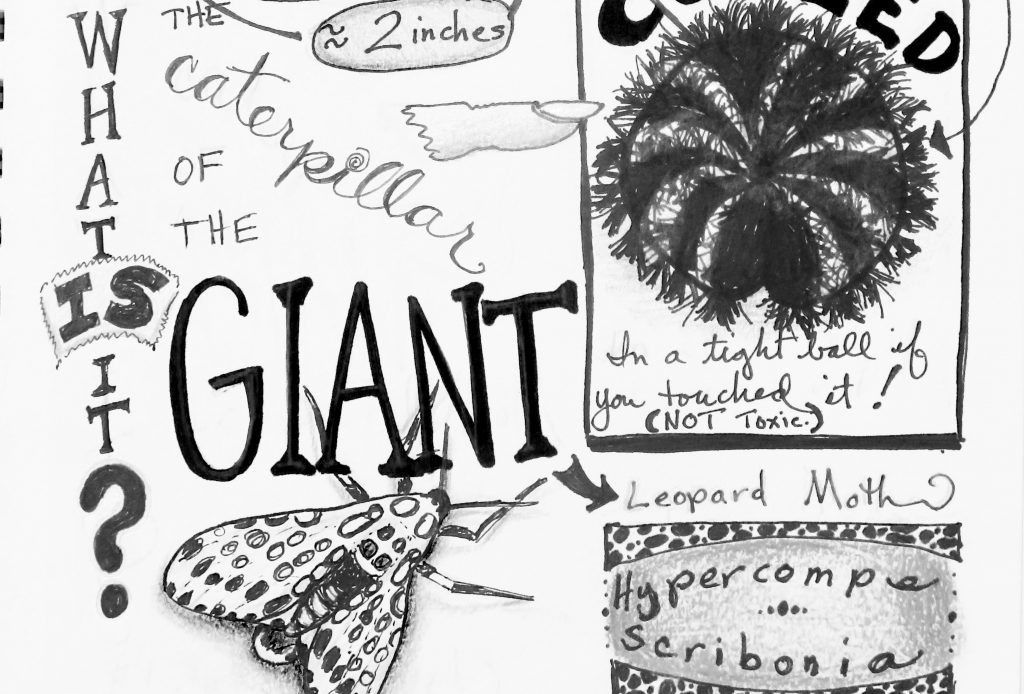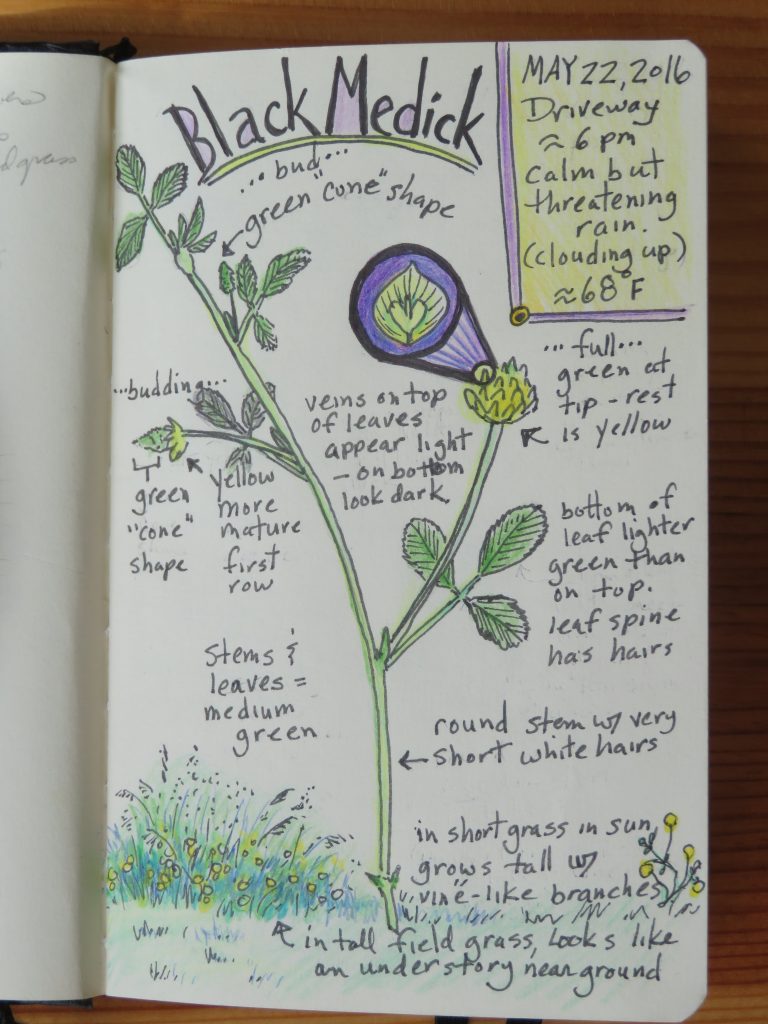











A few examples of nature journaling from Mary Edeburn’s field notebook.
Nature journaling can be a satisfying and fun way to observe and connect with nature. The process of looking closely at plants, animals, rocks, or other objects in nature can engage our curiosity and help anyone begin to grasp the exquisite detail found everywhere in nature. When you add the reflective actions of drawing those objects, describing their details in words, and asking questions about them in a field notebook, your literacy and intimacy with all of nature grow profoundly.
Long time friend of the Duke Forest Mary Edeburn introduced us to the work of John Muir Laws, a wonderful teacher of nature journaling, this process of drawing and describing the details of the natural world. His fun and accessible approach can help learners of all ages (yes, even ripe older adults) grow their connections to nature. Please check out his website if you are interested in his approach to nature study. And, if you are so inspired after a visit, and want to share with others, we recommend this Nature Journaling Facebook Group.
In 2020 and 2021, Laws is producing a free series called “The Nature Journaling Connection” which will consist of 40 weekly videos introducing Nature Journaling for adults & children. If you have interests in beginning nature journaling, we recommend starting with the first video below!
Remember, if you can’t get out into the Forest or other natural spaces because of weather or some other factor, you could look through some of the stunning photographs from our Volunteer Photography Corps for inspiration and study.





